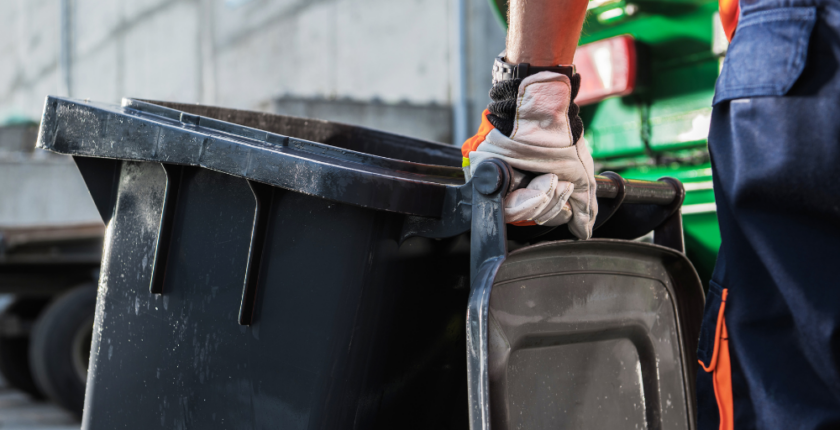The Journey of Your Waste: Where It Goes & Beyond
Every day, we generate waste: from the used coffee cup in the morning to the packaging of our meals. But once we dispose of these items, most of us rarely think about what happens to them. Where do they go? What becomes of them? The journey of waste is not a one-way ticket to oblivion but a fascinating, intricate process involving numerous steps and various destinations.
With a better understanding of what happens to your garbage and recycling after you dispose of it, you may have a better appreciation for the cycle of materials and their potential impact on the environment. Now, we will go into this journey, exploring where your waste goes and what lies beyond its initial disposal. What do you need to know?
The Life Cycle of Waste
Because there are so many steps involved in the proper disposal or recycling of waste, it is helpful to break it up into a life cycle. Some of the crucial steps during the journey of waste materials include:
Collection and Sorting
The phases of waste management begin with a waste collection system. These systems range from your curbside garbage pickup to specialized recycling centers. Garbage trucks traverse neighborhoods, gathering household waste, and transporting it to designated facilities. Here, your waste undergoes a sorting process.
Different materials, such as paper, plastic, glass, and metals, are separated from each other for recycling or proper disposal. This sorting process is an essential first step in managing waste, paving the way for the next stages of its journey. Only by making sure each item is in the proper location container can we ensure they are disposed of and handled properly.

Recycling and Repurposing
From the sorting facilities, recyclable materials are transported to dedicated recycling facilities. Here, they are further sorted, cleaned, and processed into raw materials. These raw materials are then sold and repurposed into new products.
This repurposing process conserves energy and reduces the demand for new resources. For instance, plastic bottles can be transformed into polyester fibers for clothing. Recycled paper can become packaging materials, where they see a second life. Each time we recycle, we breathe new life into our waste, extending its life cycle and reducing the environmental impact of waste generation.
Waste-to-Energy Conversion
Unfortunately, not all waste can be recycled, especially non-recyclable plastics and organic waste. To prevent these materials from ending up in landfills, waste-to-energy (WtE) conversion technologies are employed.
These state-of-the-art facilities extract energy from waste materials, which can then be used to generate electricity, heat, or even biofuels. This conversion process allows us to reclaim some of the energy initially expended in creating the waste, making the most out of what would have otherwise been considered useless.
Landfill Disposal
Despite the strides in recycling and WtE conversion, a significant portion of waste still ends up in landfills. These sites are carefully engineered and monitored to contain waste while minimizing its impact on the environment. Solid waste is compacted and layered with soil to aid decomposition and prevent the release of harmful substances into the surrounding environment. But even as we continue to rely on landfills, it’s clear that we need to seek further solutions to reduce our reliance on this form of waste management.
Beyond Disposal: The Circular Economy
The journey of waste doesn’t end in landfills. Instead, there’s an ever-growing recognition of the need to extend this journey and find more sustainable endpoints. This evolving perspective is driving the transition towards a circular economy – a closed-loop system where waste isn’t regarded merely as refuse to be discarded, but rather as a valuable resource that can be reintegrated into our economic and ecological systems.
The circular economy model revolves around several key principles: reducing waste generation, reusing and repairing products, and recycling materials to their utmost potential. By adopting these principles, we can extend the life cycle of our products and materials, minimize waste, and create more efficient, sustainable modes of production and consumption. The goal is to create a system where nothing is wasted, and everything has a purpose.

Through these strategies, the benefits extend beyond waste reduction. The circular economy helps conserve natural resources, reducing our reliance on the extraction of new materials. Furthermore, it promotes sustainable economic growth by encouraging innovation, creating jobs in the recycling and refurbishing sectors, and contributing to the green economy. Therefore, transitioning to a circular economy isn’t just a waste management solution; it’s an essential strategy for a sustainable and resilient future.
The Innovations and Future For Waste
The journey of waste is continually evolving, thanks to innovation and advancements in technology. The waste management landscape has been transformed by the rise of advanced sorting technologies, such as artificial intelligence and robotics, which enhance the efficiency of recycling processes. Furthermore, advancements in bioplastics and compostable materials offer promising alternatives to conventional, non-recyclable plastics.
One particularly promising trend is the rise of community composting and localized recycling centers. These initiatives reduce the need for waste transportation, lower carbon emissions, and foster community engagement in waste management. Composting, in particular, empowers individuals, households, and communities to take responsibility for their organic waste. It diverts waste from landfills and transforms it into a valuable resource: nutrient-rich compost that can enrich our soils and support plant growth.

As more individuals and communities embrace composting and other sustainable waste management practices, we move closer to creating a sustainable, circular economy system. In this system, organic waste is seen as a valuable asset rather than a burden. The journey of waste, far from being a linear path to disposal, becomes a cycle of renewal and regeneration – a testament to our capacity to innovate and adapt for a more sustainable future.
Rely on Seagull Disposal for All of Your Waste Disposal Needs
As we continue to journey towards a more sustainable future, it’s critical to choose a waste disposal partner committed to these same goals. Seagull Disposal stands at the forefront of waste management, offering comprehensive solutions tailored to meet your specific needs. We pride ourselves on our commitment to responsible waste disposal, embracing the principles of the circular economy and working tirelessly to ensure your waste doesn’t just disappear—it contributes to a better world.
Managing waste is a shared responsibility, and each of us plays a role in shaping its journey. Let Seagull Disposal help you navigate this path. By choosing us, you’re choosing a sustainable future for us all. If you’re ready to play your part in creating a circular economy, don’t hesitate to contact us today. Let us turn your waste into a resource for tomorrow.

